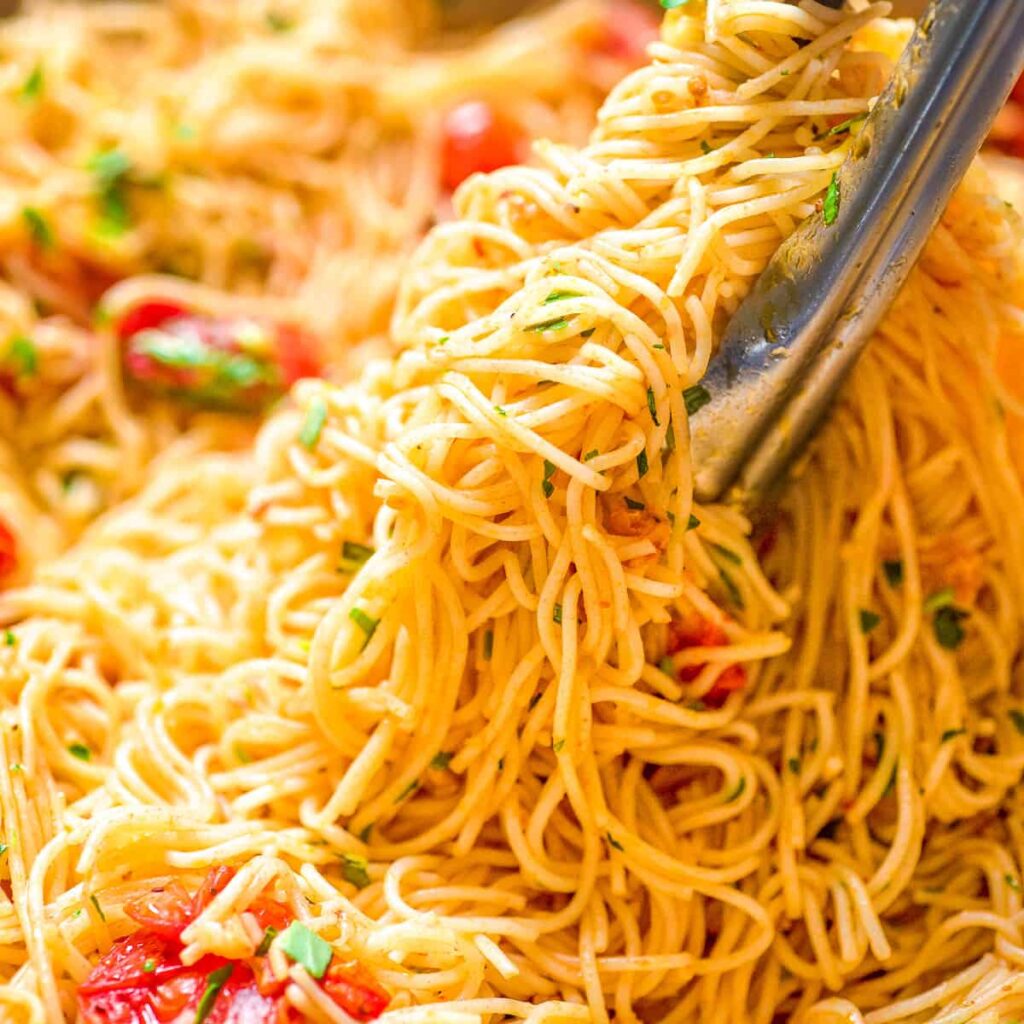How Long to Cook Angel Hair Pasta: A Comprehensive Guide
Angel hair pasta, known for its delicate texture and quick cooking time, is a favorite among pasta lovers. Understanding how to cook it properly ensures that you achieve the perfect al dente texture, enhancing your culinary experience. This article will provide a detailed overview of cooking angel hair pasta, including cooking times, techniques, and tips for serving it with various sauces. Additionally, we will address common questions in a FAQ section and include a table summarizing key information.
What is Angel Hair Pasta?
Angel hair pasta, or “capellini” in Italian, is one of the thinnest types of pasta available. Its fine strands cook quickly, making it a popular choice for quick meals. Due to its delicate nature, it pairs best with lighter sauces that won’t overwhelm its texture.
Cooking Time for Angel Hair Pasta
The cooking time for angel hair pasta typically ranges from 2 to 5 minutes, depending on the brand and thickness. Here’s a breakdown of how to achieve the ideal cooking time:
- 2 Minutes: Some brands may recommend cooking angel hair pasta for as little as 2 minutes for a very al dente texture.
- 4 to 5 Minutes: Most standard cooking instructions suggest boiling angel hair pasta for about 4 to 5 minutes. This ensures the pasta is cooked through but still retains a slight firmness.
Step-by-Step Guide to Cooking Angel Hair Pasta
- Gather Ingredients and Equipment
- Ingredients: Angel hair pasta, water, kosher salt, and your choice of sauce.
- Equipment: A large pot, colander, and a wooden spoon or pasta fork.
- Fill a Large Pot with Water
- Use about 4 quarts of water for every pound of pasta. This allows the pasta to move freely and cook evenly.
- Add Salt
- Add 1 to 2 tablespoons of kosher salt to the boiling water. This step is crucial as it enhances the flavor of the pasta.
- Bring Water to a Boil
- Turn the heat to high and wait for the water to reach a rolling boil. You’ll know it’s ready when bubbles vigorously break the surface.
- Add the Angel Hair Pasta
- Gently place the pasta into the boiling water. If it doesn’t fit entirely, wait a few seconds and gently push it down with a spoon until it softens.
- Stir Immediately
- Use a long spoon or fork to stir the pasta. This prevents the strands from sticking together or to the bottom of the pot.
- Boil for 2 to 5 Minutes
- Start checking for doneness at the 2-minute mark. Taste a strand; it should be al dente—firm to the bite but cooked through. If it’s not ready, check every 30 seconds until it reaches the desired texture.
- Reserve Some Pasta Water
- Before draining, save a cup of the starchy pasta water. This can be useful for adjusting the consistency of sauces.
- Drain the Pasta
- Carefully pour the pasta into a colander to remove the boiling water. Avoid rinsing to preserve the starch, which helps sauces cling to the pasta.
- Serve Immediately
- Angel hair pasta is best enjoyed fresh off the stove. Combine it with your sauce of choice, using the reserved pasta water if needed to achieve the perfect sauce consistency.
Cooking Tips for Angel Hair Pasta
- Avoid Overcooking: Angel hair pasta cooks very quickly, so keep a close eye on the time. Overcooking will result in mushy pasta.
- Use Plenty of Water: A large pot of water helps prevent the pasta from sticking together and ensures even cooking.
- Don’t Add Oil: Contrary to popular belief, adding oil to the cooking water is unnecessary and can prevent sauces from adhering to the pasta.
- Finish in the Sauce: For the best flavor, consider adding the drained pasta directly to your sauce for the last minute of cooking. This allows the pasta to absorb some of the sauce’s flavors.
Common Sauces for Angel Hair Pasta
Angel hair pasta pairs well with a variety of sauces. Here are some popular options:
| Sauce Type | Description |
|---|---|
| Olive Oil & Garlic | A simple yet flavorful option that highlights the pasta’s delicate texture. |
| Pesto | A fresh and vibrant sauce made from basil, garlic, and pine nuts. |
| Tomato Sauce | A light tomato sauce works well, especially with added herbs. |
| Cream Sauce | A light cream sauce can add richness without overpowering the pasta. |
| Seafood Sauce | Light seafood sauces, such as clam sauce, complement the thin strands beautifully. |
FAQ Section
- How long does it take to cook angel hair pasta?
- Angel hair pasta typically takes 2 to 5 minutes to cook, depending on the brand and desired texture.
- What is the best way to tell if angel hair pasta is done?
- The best method is to taste a strand. It should be al dente—firm to the bite but cooked through.
- Should I add oil to the pasta water?
- No, it is not necessary to add oil. Instead, stir the pasta to prevent sticking.
- How much water should I use to boil angel hair pasta?
- Use about 4 quarts of water for every pound of pasta to ensure it cooks evenly.
- Can I reuse pasta water?
- Yes, pasta water is starchy and can be used to adjust the consistency of sauces.
- What sauces work best with angel hair pasta?
- Lighter sauces, such as olive oil, pesto, or light tomato sauce, work best with angel hair pasta.
- Can I cook angel hair pasta in advance?
- While it’s best served fresh, you can cook it in advance and rinse it with cold water to prevent sticking. Reheat it in your sauce.
- Is angel hair pasta gluten-free?
- Traditional angel hair pasta is made from wheat. However, gluten-free versions are available made from rice or other gluten-free grains.
Conclusion
Cooking angel hair pasta can be a quick and satisfying process when done correctly. By following the steps outlined in this guide, you can achieve the perfect al dente texture and pair it with a variety of delicious sauces. Remember to keep an eye on the cooking time, as this delicate pasta cooks faster than many others. Enjoy experimenting with different flavors and combinations to make the most of your angel hair pasta dishes.For more information on cooking pasta, you can refer to the following resource:
- Pasta – Wikipedia



